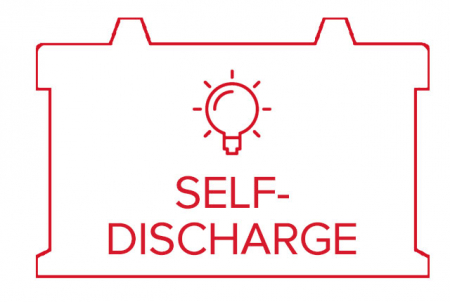Battery self-discharge is the natural loss of charge when a battery is not in use. Several factors contribute to this phenomenon, and these factors can vary depending on the type of battery. Here’s an analysis of the primary causes of battery self-discharge.
1. Chemical Reactions
- Internal Leakage: Imperfect separation between the anode and cathode can cause a small amount of current to flow internally, leading to gradual discharge.
- Impurities in Materials: Impurities in the battery materials can react with the electrolyte, causing self-discharge. This is more common in cheaper or lower-quality batteries.
2. Temperature
- High Temperatures: Elevated temperatures accelerate the chemical reactions within the battery, leading to a higher rate of self-discharge. This effect is pronounced in almost all types of batteries.
- Low Temperatures: Although high temperatures are more detrimental, extremely low temperatures can also cause increased self-discharge in some battery chemistries, such as nickel-based batteries.
3. Battery Design and Quality
- Manufacturing Defects: Poor manufacturing processes can lead to defects that increase self-discharge. These defects might include thin separators, contaminants, or improper electrode placement.
- Age and Usage History: Older batteries or those that have undergone many charge-discharge cycles tend to self-discharge faster due to wear and degradation of the internal materials.
4. Type of Battery Chemistry
- Lead-Acid Batteries: Self-discharge occurs due to the internal corrosion of the plates and the slow reaction between the lead dioxide (PbO2) and sulfuric acid (H2SO4).
- Nickel-Based Batteries (NiCd, NiMH): These batteries self-discharge due to internal chemical reactions and the gradual breakdown of the electrolyte.
- Lithium-Ion Batteries: Self-discharge happens through the formation of solid electrolyte interphase (SEI) layers and other side reactions within the cell.
5. State of Charge
- High State of Charge: Batteries stored at a high state of charge tend to self-discharge faster due to increased reactivity within the cell.
- Low State of Charge: Storing batteries at very low charge can lead to internal chemical changes that also increase self-discharge.
6. Environmental Factors
- Humidity: High humidity can cause external moisture to enter the battery, leading to short circuits or accelerated chemical reactions.
- Vibration and Shock: Mechanical stress from vibration or shock can cause internal damage, leading to increased self-discharge.
Mitigation Strategies
To minimize self-discharge, consider the following strategies:
- Proper Storage: Store batteries in a cool, dry place to slow down chemical reactions.
- Regular Charging: Periodically recharge batteries to maintain an optimal state of charge.
- Quality Selection: Choose high-quality batteries from reputable manufacturers to reduce the likelihood of impurities and defects.
- Temperature Management: Avoid exposing batteries to extreme temperatures.
Understanding and managing these factors can help in prolonging battery life and maintaining their performance during storage.


